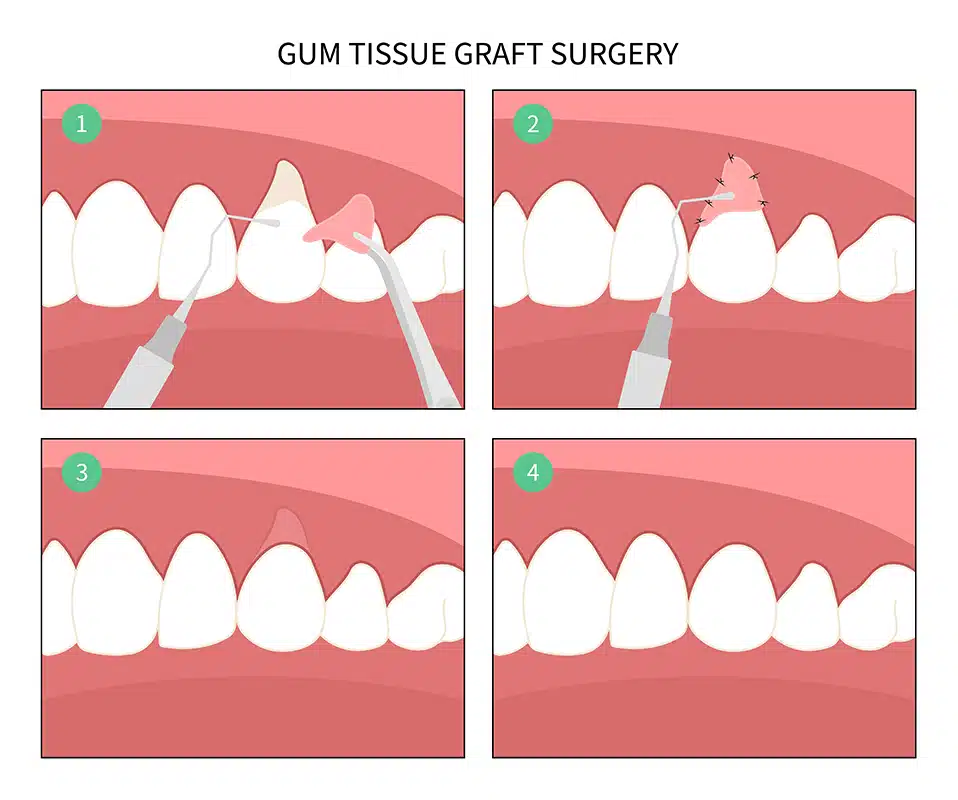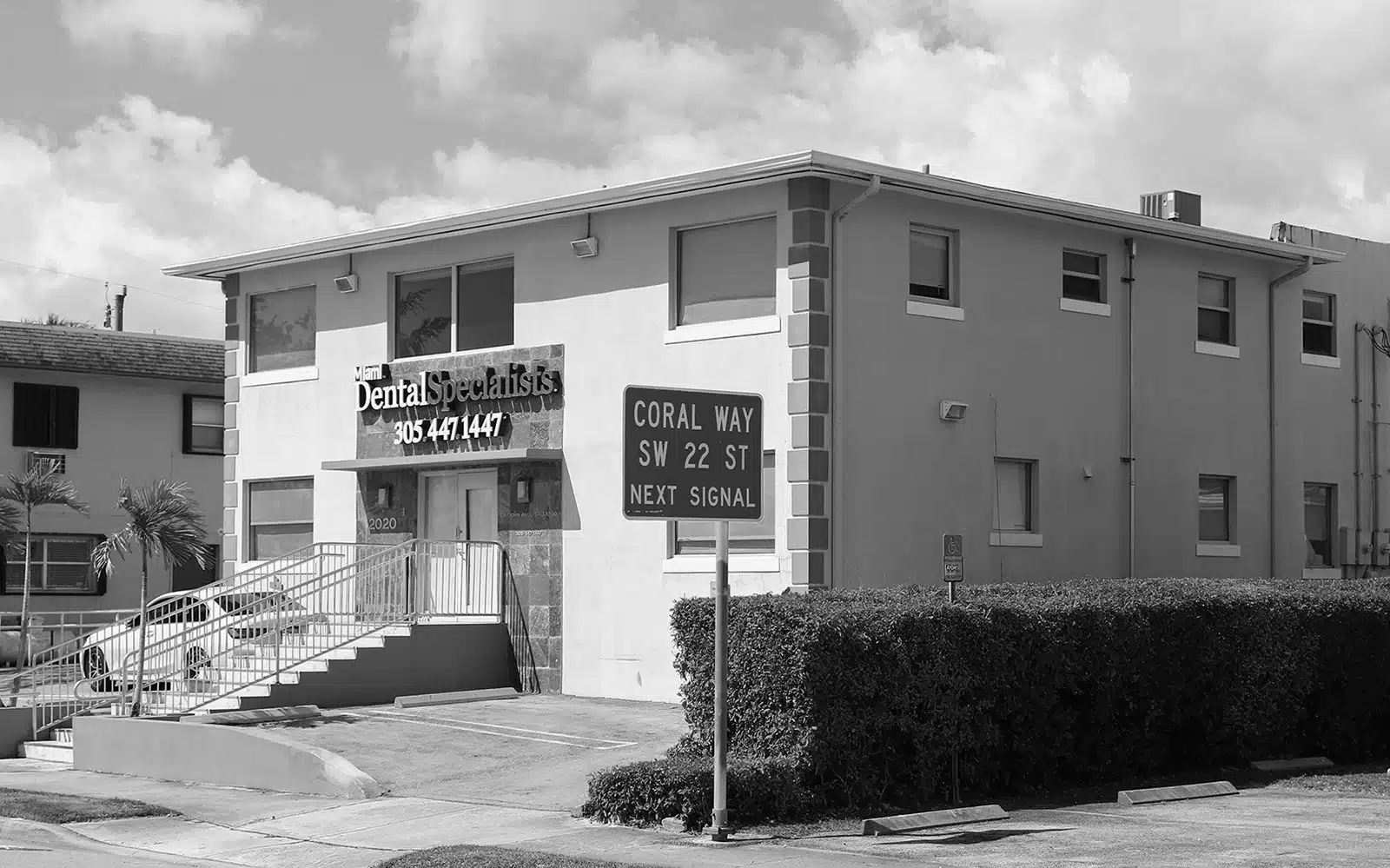
Gaps that look like black squares form around the base of teeth. These gaps are also called gingival embrasures. Gums that pull away from the teeth are a common cause of them. This can be caused by gum disease, brushing too hard, mouth piercings, orthodontic treatment, TMJ, or problems with the bite.
It’s not only bad for your mouth health, but these gaps can make you feel bad about your appearance. The reasons behind black triangles, how they affect dental health, common treatments, and how pinhole gum surgery might be a good option for people with this dental problem are all covered in this piece.
Can pinhole gum surgery for black triangles help improve my smile?
Yes, it can! If you’ve got those little dark gaps between your teeth (called black triangles), this surgery can help make them disappear. The best part? No cutting, no stitches, and it’s super gentle. Your dentist just moves your gums back into place through a tiny hole. It makes your smile look way better, and it also helps keep your teeth healthier and less sensitive.
Here’s the simple stuff to remember:
- It’s quick and gentle—just a small poke, and your gums get moved into the right spot.
- It makes those dark spaces between your teeth go away, so your smile looks fuller and nicer.
- You’ll feel okay after—maybe a little sore, but most people are totally fine the next day.
- It’s way easier than old-school gum surgery, and it works really well without being scary.
- Brushing gently and seeing your dentist can help stop those black gaps from coming back.
If you ever noticed those gaps and they bother you, this might be a super chill fix. Let me know if you want it explained even simpler or in another format!
What causes black triangles between teeth?
Black triangles are formed when the gum tissue between teeth recedes, exposing the tooth’s root surface and creating a dark gap. There are several factors that can contribute to gingival recession and the formation of black triangles, including:
- Gum disease : Sometimes known as periodontal disease, is a bacterial infection that can inflame the gums and compromise supporting bone integrity. The gums could start to recede as the condition advances, creating black triangles.
- Aggressive toothbrushing: Brushing too hard or using a toothbrush with hard bristles can wear away the gum tissue, causing it to recede and form black triangles.
- Orthodontic treatment: Some orthodontic procedures may cause the gums to recede, especially if the teeth are moved too quickly or if there is inadequate bone support.
- Oral piercings: Piercings on the lips or tongue can irritate the gum tissue and cause it to recede.
- TMJ or bite problems: Too much force on the teeth and gums from a misaligned bite or a problem with the temporomandibular joint (TMJ) can cause recession of the gums and the formation of black triangles.
How do black triangles affect your oral health?

Black triangles can have several negative effects on oral health, including:
- Increased risk of tooth decay: Plaque accumulation and tooth decay are more likely to affect the exposed black triangular tooth root surfaces.
- Tooth sensitivity: Exposed tooth roots may make one more sensitive to sweet, cold, or hot meals and beverages.
- Periodontal disease progression: If gum recession is caused by periodontal disease, the presence of black triangles can indicate that the disease is progressing and requires further treatment.
- Aesthetic concerns: Black triangles can be unsightly and affect a person’s self-confidence and willingness to smile.
What are the traditional treatment options for black triangles?
There are several traditional treatments available for addressing black triangles, including:
- Dental bonding: A tooth-colored composite resin material can be applied to the exposed tooth root surfaces to close the gaps and improve the appearance of black triangles.
- Porcelain veneers or dental crowns: Restorative procedures can straighten teeth, conceal dental roots, and close black triangles for a better appearance.
- Orthodontic treatment: In some cases, orthodontic treatment, such as Invisalign, can help close black triangles by moving the teeth into better alignment.
- Gum grafting: The procedure consists of transferring healthy gum tissue from one area of the mouth to cover exposed tooth roots and fill gaps resulting from receding gums.

How does pinhole gum surgery work to treat gum recession?
It is also called the Chao Pinhole Surgical Technique. Pinhole gum surgery is a minimally invasive way to treat gum recession that doesn’t require cuts or gum grafts. This new method, which was created by Dr. John Chao, includes making a small hole in the gum tissue near the problem area.
Through the pinhole, special instruments are inserted to gently loosen and reposition the gum tissue, which covers the exposed tooth roots and closes the black triangles. The procedure is scalpel-free and suture-free, resulting in minimal pain, swelling, and recovery after pinhole surgery for the patient.
Pinhole surgery Before & After Photos

* All patients are unique and individual results may vary.
What is the procedure and recovery like for pinhole gum surgery?
The pinhole gum surgery procedure typically takes about an hour to complete, depending on the number of teeth being treated. The process involves the following steps:
- Local anesthesia is administered to numb the treatment area.
- A small pinhole is made in the gum tissue near the affected tooth or teeth.
- The gum tissue is gently loosened and repositioned using special instruments inserted through the pinhole.
- Collagen strips may be inserted through the pinhole to help stabilize the newly repositioned gum tissue and promote healing.
Following the procedure, patients can expect minimal pain and swelling, with most able to return to their normal activities within a day or two. Over-the-counter pain medications may be recommended to manage any discomfort. It is essential to maintain good oral hygiene and follow any post-operative instructions provided by the dental professional to ensure a smooth healing process and optimal results.
How successful is pinhole gum surgery for black triangles?
The success rates of pinhole gum surgery for treating dark triangles are quite promising. This innovative surgical procedure has shown significant improvements in addressing gingival recession, periodontal disease, and gingival embrasures, which are the main causes of black triangles.
One key difference between a pinhole technique and other dental treatments, such as dental bonding, traditional veneers, or dental crowns, is that it is a minimally invasive procedure that focuses on repositioning the gum tissue rather than altering the entire tooth structure. This makes it an ideal treatment option for those with misaligned teeth, tooth sensitivity, or other dental issues that may contribute to the formation of black triangles.
Pinhole gum surgery is a viable solution for addressing bone loss and supporting the healing process of the gum tissue. This is particularly important in cases where traditional surgical techniques, such as connective tissue grafts or bone grafts, may not provide adequate gum tissue coverage or may require extensive treatment and recovery time.
How can you prevent black triangles from forming?
Preventing black triangles from forming in the first place is the best way to maintain a healthy and attractive smile. Here are some tips to help prevent the development of black triangles:
- Maintain good oral hygiene: Brush your teeth at least twice a day using a soft-bristled toothbrush and fluoride toothpaste. Floss daily to remove plaque and food particles from between your teeth and along the gumline.
- Schedule regular dental check-ups and cleanings: Professional cleanings can help remove plaque and tartar buildup that can lead to gum disease and the formation of black triangles. Regular dental check-ups can also help identify any potential issues before they become more severe.
- Avoid aggressive brushing: Using a hard-bristled toothbrush or applying too much pressure when brushing can cause gum recession and contribute to the formation of black triangles. Use a soft toothbrush and gentle circular motions to clean your teeth.
- Address orthodontic issues: Misaligned teeth can contribute to the development of black triangles. Consult with a dental professional to determine if orthodontic treatment, such as braces or Invisalign, is necessary to correct your bite and prevent black triangles from forming.
- Quit smoking: Smoking can increase your risk of gum disease and gum recession, which can lead to the formation of black triangles. Quitting smoking can improve your overall oral health and reduce your risk of developing black triangles.
Is pinhole gum surgery right for you?
Pinhole gum surgery can be an effective solution for treating black triangles caused by gingival recession. This minimally invasive procedure offers a less painful and quicker recovery time compared to traditional gum grafting techniques. If you are dealing with black triangles and are interested in pinhole gum surgery, it is essential to prioritize good oral hygiene and make regular check-ups a part of your dental routine.
However, it is essential to consult with a dental professional to determine if pinhole gum surgery is the right cosmetic treatment option for your specific case. Consulting with Dr. Gallardo will provide you with expert guidance and ensure the long-term success of the treatment.